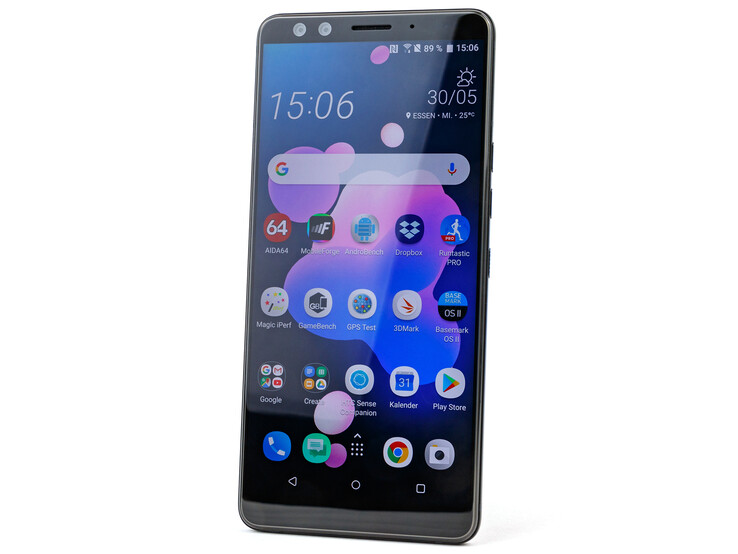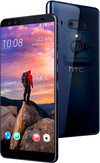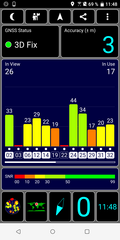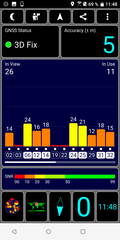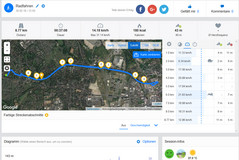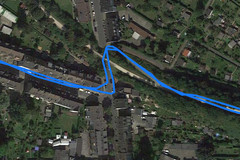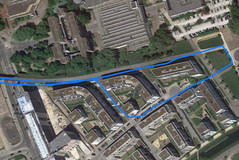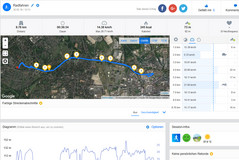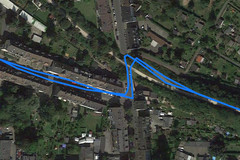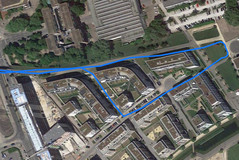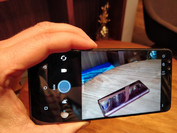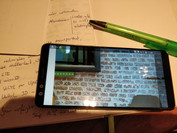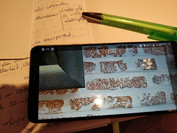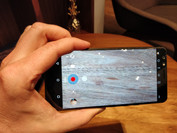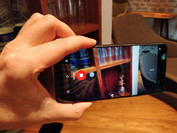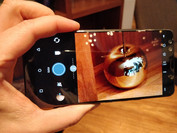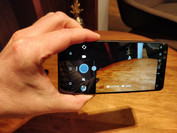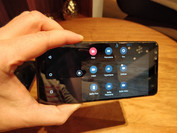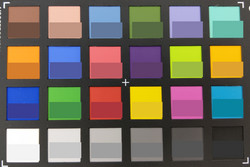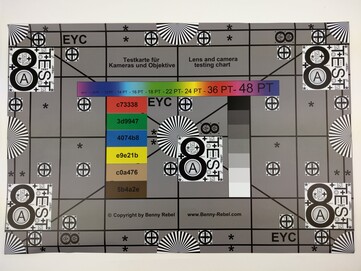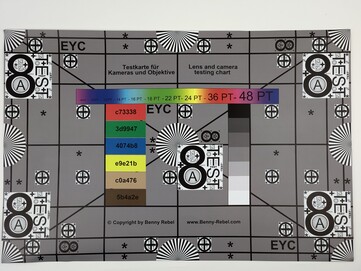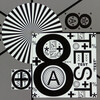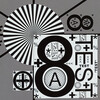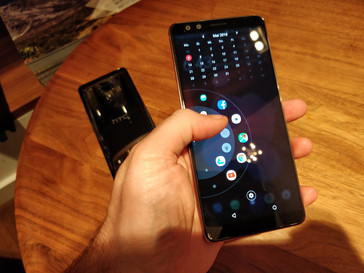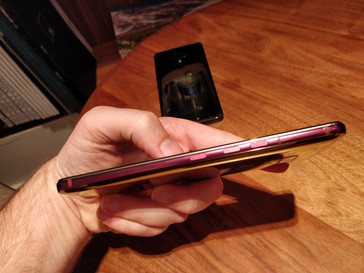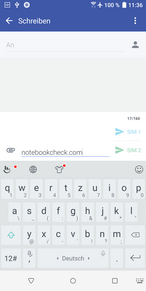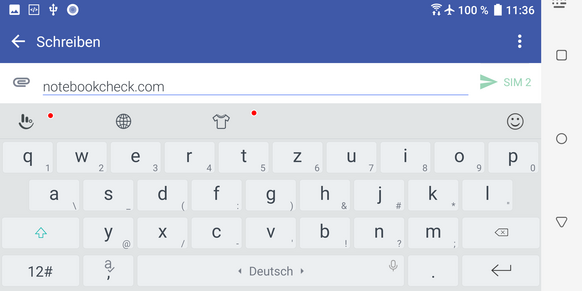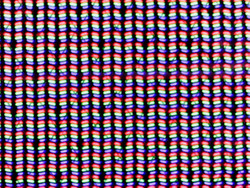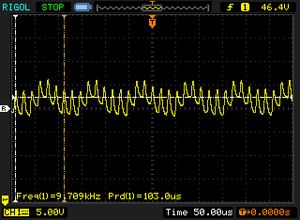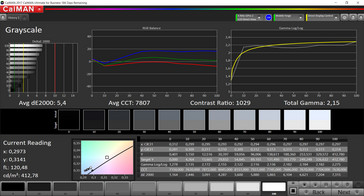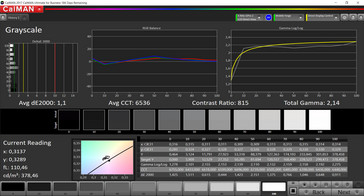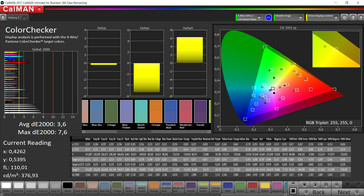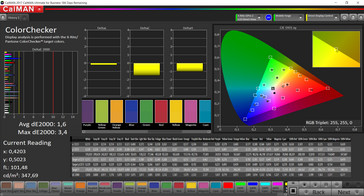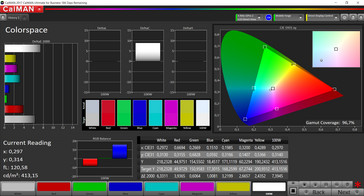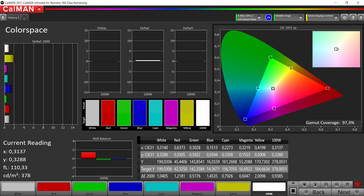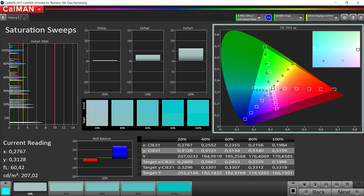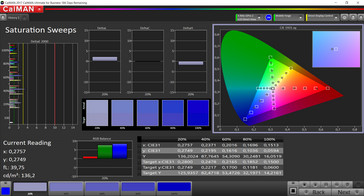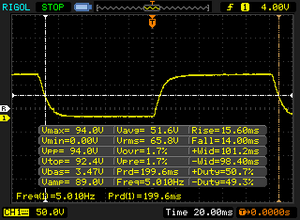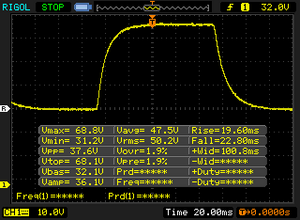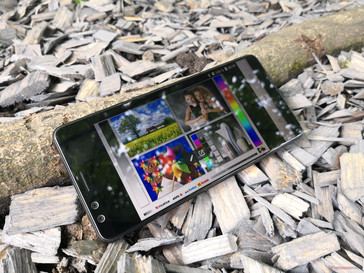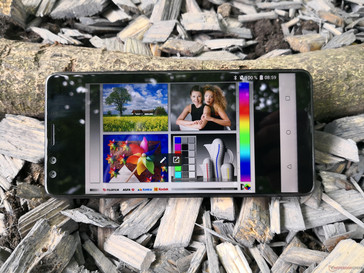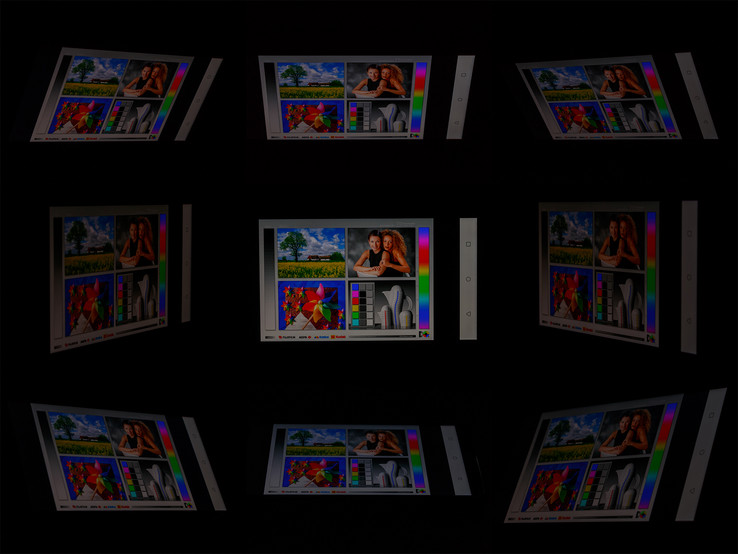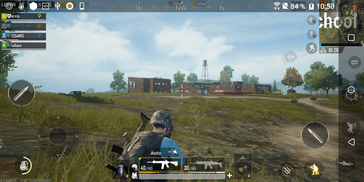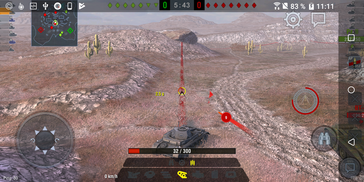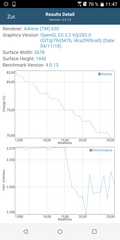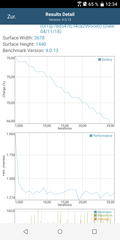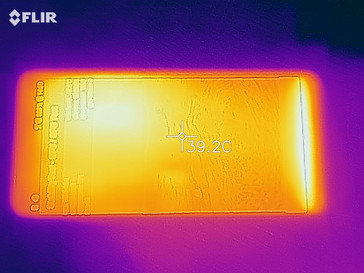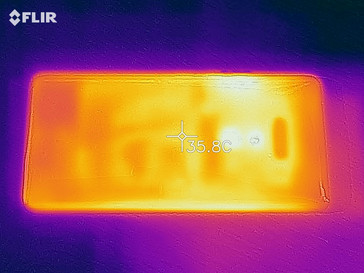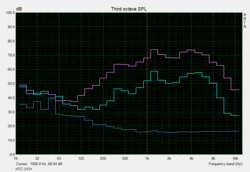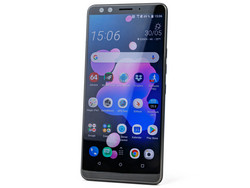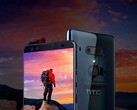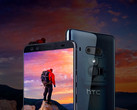HTC U12 Plus Smartphone Review
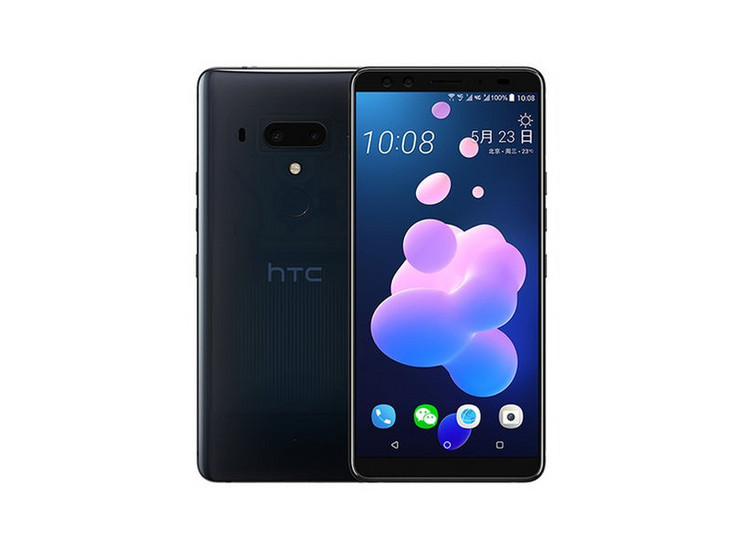
HTC certainly has not lost its spunk; the Taiwanese manufacturer has just announced the HTC U12+ as the only flagship smartphone for 2018. According to HTC, their one and only flagship contender for 2018 contains every single feature deemed necessary to play with the big boys this year. Unlike in previous years we will not see an interim HTC U12 this year as this move or product has been dubbed pointless by HTC. Instead, this engineering marvel contains so many features that it can easily keep up with every other so-called “Plus” smartphone, hence the name. These features include, but are not limited to enhanced Edge Sense controls, upgraded cameras, a high-resolution 2:1 display, and one of the fastest SoCs money can buy.
The device can be pre-ordered at a retail price of $799 for the 64 GB and $849 for the 128 GB model, and it is expected to ship in June. HTC club members can receive a 10% discount on HTC’s website.
At first glance it looks like a pretty decent deal, but will it endure our closer look? We have had the chance to take a closer look at the HTC U12+ during a preview event in Munich, Germany. Please note that the photographed and tested devices in this article are pre-production samples that can differ quite significantly from the actual production model in terms of choice of material, build quality, and performance. By now, we have also received our final test sample which we have pitted against the crème de la crème of high-end smartphones: Samsung Galaxy S9+, Huawei P20 Pro, Apple iPhone X, OnePlus 6, Sony Xperia XZ2, Nokia 8 Sirocco, LG G7 ThinQ, and last but not least the Xiaomi Mi Mix 2s. In addition, HTC’s latest flagship candidate will also have to prove itself vis-a-vis its U11 Plus predecessor, which scored particularly poorly in the display department.
This review was originally published as live review and updated bit by bit every other day. The translation is based on the final and finished review.
Changelog:
- 06/20/2018: additional information added regarding the 3.5-mm headphone adapter in the Speakers section.
Case
Even though the only color available for pre-order right now is “Translucent Blue” (coincidentally also the most exciting choice), the HTC U12+ will eventually be available in three different colors. This particular color concept has already been applied to the HTC U11 Plus: a translucent case through which the internal hardware becomes visible to the observer. Apparently, the U11 Plus in this particular choice of color sold better than expected, and HTC has decided to recycle the idea for its U12+. The rear side’s center is translucent and shows the battery’s prettified surface as well as other internal hardware components. The translucency fades towards the sides and turns into a solid Blue. The other two color options are just as exciting - once again HTC’s so-called liquid design philosophy makes for several layers of glass resulting in marvelous reflections and light effects. For example, the Black model seems to be more Grayish from some angles, but deep Black from others and the “Flame Red” model can look Golden from a specific angle. This design is gorgeous to look at, however the glass surface is also fairly susceptible to fingerprints and scratches. In fact, you can see a fair amount of scratch marks on the preview units pictured below.
Thanks to a special manufacturing technique HTC has been able to further reduce the bezel width at the front on the sides. The bezels above and below the display have remained untouched, though, and are required to house various sensors, cameras, and the speakers.
Unfortunately, the device’s sturdiness was nothing to write home about. Applying pressure to the front or back resulted in visible distortions on the display, and the case creaked slightly but noticeably under torsional pressure. That said we would like to once again remind our readers that these were pre-production samples and we will have to wait for an actual finalized production unit before making any judgements or assumptions.
The rear-facing main camera sits flush with the case and features a surrounding frame for improved protection from scratches. At 9.7 mm (0.4 in), the U12+ is quite bulky but makes up for its size with a weight of just 188 g (6.6 oz) and thus less than most flagship smartphones.
Connectivity
While US customers can choose between a 64 GB and a 128 GB model with 6 GB of RAM each, European customers are limited to the former for the time being. Both models support memory expansion via microSD cards of up to 2 TB, which can be formatted as internal storage.
The phone offers two 4G/LTE-capable SIM slots, one of which shares its physical space with the microSD card. HTC has promised a software update to include Dual-VoLTE in the future. In case one’s carrier supports Wi-Fi calling, the U12+ does so as well.
As before, audio signals are put out via the smartphone’s USB-C connector, which also supports DisplayPort and USB-OTG. Wireless media support includes HTC Connect, Apple AirPlay, Micacast, and DLNA. Radio and infrared blaster are not supported.
Software
HTC’s own Sense user interface is imposed on Android 8.0 Oreo, and HTC has promised an update to Android P. At the same time, the Taiwanese manufacturer did not fail to emphasize that previous devices have always received at least 2 major Android upgrades in the past. The security patch level of our final test sample was as of March 2018, and thus somewhat outdated. However, past experiences seem to indicate that one can expect quarterly updates from HTC.
As usual, HTC’s own Sense Companion is preloaded on the device. Its artificial intelligence analyzes the user’s behavior in order to offer useful tips or automatically apply settings. By and large, the OS is surprisingly vanilla with just a handful of preloaded apps. The phone supports so-called motion launch gestures, which are basically individually configured gestures to interact with the phone, as well as Edge Sense. The latter has already been present on the HTC U11 and U11 Plus, and it has been improved for this year’s model.
Unfortunately, Android’s user management feature has been disabled on the HTC U12+.
Communication and GPS
LTE Cat. 18 with up to 1.2 Gbps (downstream) is included, and the device supports a total of 18 different LTE bands. Traveling abroad with the U12+ should thus be fairly uncomplicated. During our tests, cellular reception was inconspicuous and did not cause any problems.
Support for 802.11 a/b/g/n/ac Wi-Fi, Bluetooth 5.0, and NFC are pretty much a must for any flagship smartphone these days. Connected to our Linksys EA8500 reference router’s 5 GHz Wi-Fi network, the phone’s transfer rates were very high and consistent. The Wi-Fi range was superb by and large. However, PUBG Mobile complained about poor connectivity every now and then and even terminated the connection on one occasion.
| Networking | |
| iperf3 transmit AX12 | |
| LG G7 ThinQ | |
| HTC U11 Plus | |
| HTC U12 Plus | |
| Samsung Galaxy S9 Plus | |
| Apple iPhone 8 Plus | |
| iperf3 receive AX12 | |
| Apple iPhone 8 Plus | |
| LG G7 ThinQ | |
| Samsung Galaxy S9 Plus | |
| HTC U12 Plus | |
| HTC U11 Plus | |
Location services support includes A-GPS, GPS, GLONASS, BeiDou, and Galileo. Outdoors, GPS lock was obtained within less than one second and accuracy eventually settled at around 3 m (~10 ft). Indoors, it took around 15 s to obtain GPS lock and accuracy was between 5 and 24 m (~16 – 79 ft).
In order to determine GPS precision, we take every smartphone on a short bicycle tour together with a professional Garmin Edge 500 GPS. After finishing the ride the recorded GPS tracks differed by just 10 m (~33 ft), and the HTC U12+ did an excellent job by and large. In most cases positioning was very precise, and the U12+ gets our full endorsement in this particular respect.
Telephony and Call Quality
Not much has changed in terms of telephony, and our review unit’s call quality was superb. Using the device’s earphone, voice quality was excellent on both sides but was accompanied by minor static when connected to a 3G network. On speakerphone, voice quality remained very high with just minor reverberations. If ambient noise was low we were even able to walk away from the phone. The included headset supports active noise cancelling and performed exceptionally well.
The HTC U12+ supports both VoLTE as well as Wi-Fi calling if the carrier does so as well.
Cameras
HTC has equipped its latest flagship smartphone with dual-cameras on both front and back, although the front-facing camera uses the secondary lens for an improved bokeh effect in portrait mode only. It features an 8 MP sensor (f/2.0, 1.12 µm) with an 84° wide angle lens. Image quality was decent in bright daylight, but we were somewhat disappointed by the bokeh effect. The transition between the parts that are in focus and those that are not was very blurred and easily noticeable even on the phone’s display. Low-light conditions resulted in visible noise fairly quickly. Videos are recorded at FHD - video quality was okay and the electronic image stabilization worked very well when walking around. The recorded single-channel sound is somewhat noisy.
The main rear-facing dual camera preens itself with a high DxOMark ranking (see here for details). On paper, its specifications are decent and very similar to its U11 Plus predecessor: 12 MP sensor, f/1.75 aperture, 1.4 µm pixel size, and optical image stabilization. The major differences are the new UltraSpeed Autofocus 2 (phase detection and laser autofocus) as well as 4th generation UltraPixels. The secondary lens (16 MP, f/2.6 aperture) offers a slightly higher resolution, but is otherwise not even nearly as good as the main lens. It is used mainly for depth of field effect in portrait photos and allows for a 2x optical and 10x digital zoom. All things considered we were fairly disappointed with the second lens’s quality - its photos were noticeably worse even in bright daylight. Colors were dull and dynamic range could certainly need improvement.
The main camera, on the other hand, did a fantastic job and produced very nice high-quality photos. They were very rich in detail with well-balanced colors in bright daylight, and the U12+’s shutter delay was barely noticeable. In other words: it was on a par with other flagships, such as the Huawei P20 Pro or the Galaxy S9 Plus. Quality suffered noticeably in low-light scenarios, but HTC’s flagship kept the upper hand and produced higher quality photos than for example the S9+. A Pro mode allows for shutter speeds of up to 32 seconds and supports RAW photography.
Videos are recorded in UHD at up to 60 FPS. Unfortunately, all recordings are limited to just 6 minutes. At least those 6 minutes are buttery smooth thanks to the lens’s optical image stabilization. Accordingly, video quality was excellent. Just like the LG V30, the HTC U12+ supports zooming in while filming by utilizing the secondary lens for an optical 2x zoom and a digital 4x zoom. We recommend avoiding the latter due to poor quality, though. Even the optical zoom had trouble, resulting in occasional minor flickering. In addition to hi-res sound the phone also supports recording 3D sound with its four integrated microphones. It worked quite well, although the recorded static was too loud for our taste.
Under normalized conditions using the ColorChecker, the HTC U12+ showed a very good white balance with most colors slightly overexposed and oversaturated.
We took two photos of our test chart: one with the primary wide angle and one with the secondary telephoto lens. And once again the latter was quite disappointing: white balance was off (too cool) and colors lacked saturation, most notably Yellow. Focus was decent, but not even immaculate dead center. Even though the circles were not perfect and somewhat jagged the primary lens did a much better job. The photo was in focus up to its very edges.
Accessories
A Quick Charge 3.0 compatible charger is included in the box, and HTC has assured us that the U12+ supports Quick Charge 4.0 as well. In addition to the charger, HTC has also opted to include its in-house USonic headset, which is supposed to map out the ear using sonar waves in order to individually optimize sound performance and supports active noise cancellation. A transparent plastic case is also included, although a USB-C dongle to connect standard headphones is missing.
By default, the phone comes with a 24-month limited warranty. Please see our Guarantees, Return policies and Warranties FAQ for country-specific information.
Input Devices & Handling
HTC has upped the ante with their Edge Sense technology, and the U12+ supports Edge Sense 2 allowing to control the smartphone via pressure applied to its edges. The improved second generation of this feature introduces additional gestures. Instead of simply applying pressure, one can now also hold or double-press in order to issue specific commands. It is supposed to work with every single app by training Edge Sense beforehand and showing it which pressure action is supposed to press which button on screen. Even system calls, such as Android’s back feature, shrinking the display for one-handed use, or displaying the navigation wheel that can be seen on our photos below are supported.
Other uses of the Edge Sense 2 technology include, among other things touch detection capabilities. Say you are watching a video on our smartphone - in that scenario the phone is only going to rotate the screen to landscape if you are actively holding the phone in your hands.
The hardware buttons on the right side deserve some attention, too. Unlike on previous HTC smartphones, those buttons are no longer actual physical hardware buttons but touch sensitive buttons instead. And just like the home button on Apple’s iPhones they simulate a click by vibrating accordingly. Truth be told, they felt pretty convincing during our short tests.
The navigation buttons can be found on-screen, and the fingerprint reader is placed at the rear and easy to locate by touch and feel alone. And as always the smartphone supports various gestures for individualization and customization.
Display
On paper, the U12+’s display looks identical to its predecessor’s. It measures 6 inches (15.24 cm) diagonally and boasts an impressive 2880x1440 resolution. As such, the phone is made for VR. The display also supports HDR10.
Overall, the brightness of this 6th generation Super LC display has been improved slightly but was still nowhere near our expectations. Most smartphones for less than $200 feature a brighter display than the U12+. Even the included ambient light sensor was unable to improve the display brightness any further. Using the APL 50 test, which distributes bright and dark areas evenly all over the display, the brightness distribution turned out to be abysmal, and the middle of the display produced just 319 nits. Compared to its predecessor the black level has suffered quite a bit, and the resulting contrast ratio of 1,068:1 (APL 50: 840:1) is mediocre at best.
The panel supports displaying information on-screen when the phone is in standby, and it also includes a night mode. Unfortunately, HTC has once again opted for brightness control via PWM albeit at a very high frequency. We did not noticed any halos or backlight bleeding on our review unit’s display.
| |||||||||||||||||||||||||
Brightness Distribution: 90 %
Center on Battery: 395 cd/m²
Contrast: 1068:1 (Black: 0.37 cd/m²)
ΔE ColorChecker Calman: 1.6 | ∀{0.5-29.43 Ø4.78}
ΔE Greyscale Calman: 1.1 | ∀{0.09-98 Ø5}
97.3% sRGB (Calman 2D)
Gamma: 2.14
CCT: 6536 K
| HTC U12 Plus Super LCD 6, 2880x1440, 6" | HTC U11 Plus Super LCD 6, 2880x1440, 6" | Samsung Galaxy S9 Plus Super AMOLED, 2960x1440, 6.2" | Apple iPhone X Super AMOLED, 2436x1125, 5.8" | OnePlus 6 Optic AMOLED, 2280x1080, 6.3" | Huawei P20 Pro OLED, 2240x1080, 6.1" | Sony Xperia XZ2 IPS, 2160x1080, 5.7" | LG G7 ThinQ IPS, 3120x1440, 6.1" | |
|---|---|---|---|---|---|---|---|---|
| Screen | -10% | -11% | 17% | -30% | 18% | 3% | -66% | |
| Brightness middle (cd/m²) | 395 | 361 -9% | 565 43% | 600 52% | 430 9% | 569 44% | 630 59% | 974 147% |
| Brightness (cd/m²) | 402 | 356 -11% | 571 42% | 606 51% | 437 9% | 578 44% | 632 57% | 975 143% |
| Brightness Distribution (%) | 90 | 90 0% | 96 7% | 94 4% | 87 -3% | 95 6% | 96 7% | 96 7% |
| Black Level * (cd/m²) | 0.37 | 0.21 43% | 0.44 -19% | 0.49 -32% | ||||
| Contrast (:1) | 1068 | 1719 61% | 1432 34% | 1988 86% | ||||
| Colorchecker dE 2000 * | 1.6 | 2.5 -56% | 2.3 -44% | 1.2 25% | 2.3 -44% | 1.3 19% | 1.5 6% | 5.4 -238% |
| Colorchecker dE 2000 max. * | 3.4 | 5.3 -56% | 4.8 -41% | 3 12% | 4.6 -35% | 2.1 38% | 4.3 -26% | 13.1 -285% |
| Greyscale dE 2000 * | 1.1 | 1.7 -55% | 1.9 -73% | 1.6 -45% | 2.4 -118% | 1.6 -45% | 2.1 -91% | 5 -355% |
| Gamma | 2.14 103% | 2.21 100% | 2.16 102% | 2.23 99% | 2.28 96% | 2.31 95% | 2.17 101% | 2.31 95% |
| CCT | 6536 99% | 6580 99% | 6332 103% | 6707 97% | 6160 106% | 6401 102% | 6513 100% | 7480 87% |
* ... smaller is better
Screen Flickering / PWM (Pulse-Width Modulation)
| Screen flickering / PWM detected | 9709 Hz | ≤ 50 % brightness setting | |
The display backlight flickers at 9709 Hz (worst case, e.g., utilizing PWM) Flickering detected at a brightness setting of 50 % and below. There should be no flickering or PWM above this brightness setting. The frequency of 9709 Hz is quite high, so most users sensitive to PWM should not notice any flickering. In comparison: 53 % of all tested devices do not use PWM to dim the display. If PWM was detected, an average of 8108 (minimum: 5 - maximum: 343500) Hz was measured. | |||
The device supports two different color spectrums: DCI-P3 and sRGB. Accordingly, we have analyzed both using a spectrophotometer and the CalMAN software. In DCI-P3 the phone was capable of displaying more colors at the price of accuracy and tint. The sRGB profile was much more natural and much better calibrated. Regrading color accuracy, the only competitors even better were the iPhone X and the Huawei P20 Pro. Regarding gray scale, the U12+ was the most accurate.
Display Response Times
| ↔ Response Time Black to White | ||
|---|---|---|
| 29.6 ms ... rise ↗ and fall ↘ combined | ↗ 15.6 ms rise | |
| ↘ 14 ms fall | ||
| The screen shows relatively slow response rates in our tests and may be too slow for gamers. In comparison, all tested devices range from 0.1 (minimum) to 240 (maximum) ms. » 78 % of all devices are better. This means that the measured response time is worse than the average of all tested devices (20.2 ms). | ||
| ↔ Response Time 50% Grey to 80% Grey | ||
| 42.4 ms ... rise ↗ and fall ↘ combined | ↗ 19.6 ms rise | |
| ↘ 22.8 ms fall | ||
| The screen shows slow response rates in our tests and will be unsatisfactory for gamers. In comparison, all tested devices range from 0.165 (minimum) to 636 (maximum) ms. » 69 % of all devices are better. This means that the measured response time is worse than the average of all tested devices (31.6 ms). | ||
Performance
The HTC U12+ is powered by the Snapdragon 845 - Qualcomm’s fastest SoC at the time of writing. Furthermore, it is equipped with 6 GB of fast LPDDR4x RAM and an Adreno 630 GPU. The same SoC can also be found in some of the U12+’s competitors, such as the OnePlus 6 or the Xperia XZ2.
Most benchmarks yielded scores at their respective expected levels. In terms of system performance, however, the U12+ scored a new record in the Work and Work 2.0 test, which was in line with our subjective impressions of a very snappy and responsive system.
Graphics performance was a bit worse than average due to the U12+’s high display resolution, but it scored as high as expected in the offscreen tests.
| Lightmark - 1920x1080 1080p (sort by value) | |
| HTC U11 Plus | |
| Samsung Galaxy S9 Plus | |
| Huawei P20 Pro | |
| Basemark ES 3.1 / Metal - offscreen Overall Score (sort by value) | |
| HTC U11 Plus | |
| Samsung Galaxy S9 Plus | |
| Apple iPhone X | |
| OnePlus 6 | |
| Huawei P20 Pro | |
| LG G7 ThinQ | |
| Average Qualcomm Snapdragon 845 (1169 - 1201, n=5) | |
| Average of class Smartphone (205 - 7731, n=35, last 2 years) | |
Web browsing performance felt very fast, and the benchmarks seem to support this impression. However, the competition is fierce and accordingly the phone’s performance was merely good enough for a midfield ranking. In WebXPRT 3 it managed to land in the 2nd place bested only by the seemingly unbeatable iPhone X.
| Octane V2 - Total Score | |
| Average of class Smartphone (2228 - 121337, n=197, last 2 years) | |
| Apple iPhone X (IOS 11.1.2) | |
| OnePlus 6 (Chrome 66) | |
| Sony Xperia XZ2 (Chrome 65) | |
| LG G7 ThinQ (Chrome 66) | |
| HTC U12 Plus (Chrome 66) | |
| Average Qualcomm Snapdragon 845 (3991 - 18275, n=28) | |
| Samsung Galaxy S9 Plus (Samsung Browser 7.0) | |
| Huawei P20 Pro (Chrome 65) | |
| HTC U11 Plus (Chrome 63) | |
| Mozilla Kraken 1.1 - Total | |
| Huawei P20 Pro (Chrome 65) | |
| HTC U11 Plus (Chrome 63) | |
| Average Qualcomm Snapdragon 845 (2154 - 11204, n=28) | |
| LG G7 ThinQ (Chrome 66) | |
| OnePlus 6 (Chrome 66) | |
| HTC U12 Plus (Chrome 66) | |
| Sony Xperia XZ2 (Chrome 65) | |
| Samsung Galaxy S9 Plus (Samsung Browser 7.0) | |
| Average of class Smartphone (257 - 28190, n=154, last 2 years) | |
| Apple iPhone X (IOS 11.1.2) | |
| WebXPRT 3 - Overall | |
| Average of class Smartphone (38 - 380, n=31, last 2 years) | |
| Apple iPhone X (Safari Mobile 11.3) | |
| HTC U12 Plus (Chrome 66) | |
| OnePlus 6 (Chrome 66) | |
| LG G7 ThinQ (Chrome 66) | |
| Average Qualcomm Snapdragon 845 (19 - 103, n=17) | |
| Huawei P20 Pro (Chrome 65) | |
| Samsung Galaxy S9 Plus | |
| Sony Xperia XZ2 | |
| WebXPRT 2015 - Overall | |
| Apple iPhone X (Safari Mobile 11.0) | |
| Sony Xperia XZ2 (Chrome 65) | |
| HTC U12 Plus (Chrome 66) | |
| OnePlus 6 (Chrome 66) | |
| LG G7 ThinQ (Chrome 66) | |
| Average Qualcomm Snapdragon 845 (96 - 291, n=23) | |
| Huawei P20 Pro (Chrome 65) | |
| HTC U11 Plus (Chrome 63) | |
| Samsung Galaxy S9 Plus (Samsung Browser 7.0) | |
| JetStream 1.1 - Total Score | |
| Apple iPhone X (IOS 11.1.1) | |
| Sony Xperia XZ2 (Chrome 65) | |
| LG G7 ThinQ (Chrome 66) | |
| OnePlus 6 (Chrome 66) | |
| HTC U12 Plus (Chrome 66) | |
| Average Qualcomm Snapdragon 845 (22.5 - 90.9, n=25) | |
| Samsung Galaxy S9 Plus (Samsung Browser 7.0) | |
| HTC U11 Plus (Chrome 63) | |
| Huawei P20 Pro (Chrome 65) | |
* ... smaller is better
Nominally, the HTC U12+ comes with 64 GB of storage. Out of the box, around 50 GB is accessible to the user. The phone’s very fast UFS 2.1 storage performed very well in our benchmarks, particularly when writing small blocks.
MicroSD performance has been improved slightly over its predecessor, however it is nowhere near the theoretical maximum performance of our Toshiba Exceria Pro M501 reference card (270 MB/s read, 150 MB/s write). MicroSD cards can be formatted as internal storage but will be much slower than the actual internal storage.
| HTC U12 Plus | HTC U11 Plus | Samsung Galaxy S9 Plus | OnePlus 6 | LG G7 ThinQ | Sony Xperia XZ2 | Huawei P20 Pro | Average 64 GB UFS 2.1 Flash | Average of class Smartphone | |
|---|---|---|---|---|---|---|---|---|---|
| AndroBench 3-5 | 4% | -8% | -15% | -16% | -29% | 23% | -5% | 358% | |
| Sequential Read 256KB (MB/s) | 709 | 728 3% | 819 16% | 726 2% | 695 -2% | 679 -4% | 832 17% | 696 ? -2% | 2228 ? 214% |
| Sequential Write 256KB (MB/s) | 195.8 | 207.9 6% | 204.9 5% | 201.4 3% | 176.4 -10% | 198.7 1% | 196.7 0% | 224 ? 14% | 1851 ? 845% |
| Random Read 4KB (MB/s) | 118.1 | 132.4 12% | 129.7 10% | 137 16% | 110.5 -6% | 149.4 27% | 144.3 22% | 137.2 ? 16% | 296 ? 151% |
| Random Write 4KB (MB/s) | 104.2 | 135.7 30% | 22.74 -78% | 21.8 -79% | 23.26 -78% | 17 -84% | 160.5 54% | 84.7 ? -19% | 337 ? 223% |
| Sequential Read 256KB SDCard (MB/s) | 84.3 ? | 75.4 ? -11% | 79.2 ? -6% | 84.7 ? 0% | 34.25 ? -59% | 68.6 ? -19% | |||
| Sequential Write 256KB SDCard (MB/s) | 63.6 ? | 51.3 ? -19% | 67.2 ? 6% | 62.7 ? -1% | 30.12 ? -53% | 52.2 ? -18% |
Gaming
The HTC U12+ is pretty much made for gaming. It features a large display, two speakers, and a very powerful SoC with one of the fastest currently available GPUs, the Adreno 630. Consequently, even high details were no real challenge for the U12+. One exemption from this general rule was PUBG Mobile, which started out at a very strong 40 FPS (according to GameBench) but eventually settled at just 30 FPS. Not the best, but still very smooth.
Both the touchscreen and the sensors, worked flawlessly while gaming.
| PUBG Mobile | |||
| Settings | Value | ||
| HD | 30 fps | ||
| World of Tanks Blitz | |||
| Settings | Value | ||
| high, 0xAA, 0xAF | 60 fps | ||
Emissions
Temperature
When idle, the HTC U12+ remained pleasantly cool. And while it did heat up considerably under load, the single hotspot of 38.8 °C (~102 °F) around the camera remained unproblematic.
Using GFXBench’s battery test we have determined the U12+’s performance under sustained load. In order to do so, we ran each benchmark 30x on battery and noted charge level and score after each iteration. The older T-Rex test ran very smoothly and without any significant performance decreases. Unfortunately, the newer Manhattan test (OpenGL ES 3.1) painted a very different picture. Performance decreased immediately after the first run and eventually settled at around 40% less.
(+) The maximum temperature on the upper side is 38.1 °C / 101 F, compared to the average of 35.2 °C / 95 F, ranging from 21.9 to 247 °C for the class Smartphone.
(+) The bottom heats up to a maximum of 38.8 °C / 102 F, compared to the average of 34 °C / 93 F
(+) In idle usage, the average temperature for the upper side is 29.5 °C / 85 F, compared to the device average of 32.9 °C / 91 F.
Speakers
As with the U11 Plus, HTC has once again equipped its flagship smartphone with the familiar speaker setup of two front-facing stereo speakers serving two different purposes: one is responsible for mids and highs, the other for lows (bass). Overall, the sound quality was pretty good for a smartphone. The device still lacked bass, but offered very decent mids in return. Thus, HTC’s U12+ is good enough to listen to music occasionally.
The included USonic headset did a much better job in this respect, and its high dynamics and powerful soundscape were fairly impressive. The headset maps out the ear using sonar waves in order to individually optimize sound performance, which made a noticeable difference. It also supports hi-res audio and connects via the phone’s USB-C port. It seems that the U12+’s USB-C port does not support USB-C to 3.5 mm audio jack dongles - we have tried two different adapters, one made by Samsung and one by Huawei, and both failed to work on the device. The only thing we got was an error message on the display saying the that the connected hardware is incompatible.
Wireless headphones or speakers can be connected via Bluetooth 5.0 with support for apX HD and LDAC.
Update 06/20/2018: We have news regarding our problems with above mentioned 3.5-mm headphone jack adapters. According to HTC, the two dongles used by us are not supported due to their lack of a D/A converter. The original HTC adapter that is available through various retail outlets for around $20 is officially supported, though.
HTC U12 Plus audio analysis
(+) | speakers can play relatively loud (82 dB)
Bass 100 - 315 Hz
(-) | nearly no bass - on average 15.9% lower than median
(±) | linearity of bass is average (7.5% delta to prev. frequency)
Mids 400 - 2000 Hz
(+) | balanced mids - only 3.7% away from median
(+) | mids are linear (6.4% delta to prev. frequency)
Highs 2 - 16 kHz
(±) | higher highs - on average 5.8% higher than median
(+) | highs are linear (5% delta to prev. frequency)
Overall 100 - 16.000 Hz
(±) | linearity of overall sound is average (18.9% difference to median)
Compared to same class
» 23% of all tested devices in this class were better, 10% similar, 68% worse
» The best had a delta of 11%, average was 35%, worst was 134%
Compared to all devices tested
» 43% of all tested devices were better, 8% similar, 49% worse
» The best had a delta of 4%, average was 24%, worst was 134%
Apple iPhone X audio analysis
(+) | speakers can play relatively loud (85.3 dB)
Bass 100 - 315 Hz
(±) | reduced bass - on average 14.9% lower than median
(±) | linearity of bass is average (9.4% delta to prev. frequency)
Mids 400 - 2000 Hz
(+) | balanced mids - only 3.4% away from median
(+) | mids are linear (5.1% delta to prev. frequency)
Highs 2 - 16 kHz
(±) | higher highs - on average 7.3% higher than median
(+) | highs are linear (4.6% delta to prev. frequency)
Overall 100 - 16.000 Hz
(±) | linearity of overall sound is average (19% difference to median)
Compared to same class
» 24% of all tested devices in this class were better, 9% similar, 67% worse
» The best had a delta of 11%, average was 35%, worst was 134%
Compared to all devices tested
» 44% of all tested devices were better, 8% similar, 48% worse
» The best had a delta of 4%, average was 24%, worst was 134%
Sony Xperia XZ2 audio analysis
(+) | speakers can play relatively loud (85.6 dB)
Bass 100 - 315 Hz
(-) | nearly no bass - on average 28.6% lower than median
(±) | linearity of bass is average (9.9% delta to prev. frequency)
Mids 400 - 2000 Hz
(±) | higher mids - on average 5.8% higher than median
(+) | mids are linear (6.8% delta to prev. frequency)
Highs 2 - 16 kHz
(+) | balanced highs - only 3.9% away from median
(+) | highs are linear (6.1% delta to prev. frequency)
Overall 100 - 16.000 Hz
(±) | linearity of overall sound is average (22.4% difference to median)
Compared to same class
» 47% of all tested devices in this class were better, 7% similar, 46% worse
» The best had a delta of 11%, average was 35%, worst was 134%
Compared to all devices tested
» 65% of all tested devices were better, 6% similar, 29% worse
» The best had a delta of 4%, average was 24%, worst was 134%
Battery Life
Power Consumption
Despite the more efficient SoC and the only slightly brighter display, the HTC U12+’s battery life was worse than that of it’s predecessor’s. The device’s power consumption was comparatively high, and by and large there is plenty of room for improvement; particularly at maximum brightness.
The included modular power supply supports Quick Charge 3.0 and is capable of charging the phone from near empty to full in around 100 minutes. The U11 Plus took more time to charge, but also had a larger battery in return. Wireless charging is not supported at all, however Quick Charge 4.0 is. Unfortunately, a Quick Charge 4.0 compatible power supply is nowhere to be found in the box.
| Off / Standby | |
| Idle | |
| Load |
|
Key:
min: | |
| HTC U12 Plus 3500 mAh | HTC U11 Plus 3930 mAh | Samsung Galaxy S9 Plus 3500 mAh | Apple iPhone X 2716 mAh | Sony Xperia XZ2 3180 mAh | Huawei P20 Pro 4000 mAh | Average Qualcomm Snapdragon 845 | Average of class Smartphone | |
|---|---|---|---|---|---|---|---|---|
| Power Consumption | 26% | 39% | 5% | 8% | 37% | 9% | 6% | |
| Idle Minimum * (Watt) | 0.77 | 0.51 34% | 0.68 12% | 1.03 -34% | 0.72 6% | 0.84 -9% | 0.862 ? -12% | 0.842 ? -9% |
| Idle Average * (Watt) | 2.18 | 1.62 26% | 0.95 56% | 2.4 -10% | 2.21 -1% | 1.54 29% | 1.728 ? 21% | 1.439 ? 34% |
| Idle Maximum * (Watt) | 2.21 | 1.87 15% | 1.09 51% | 2.6 -18% | 2.22 -0% | 1.57 29% | 2.07 ? 6% | 1.624 ? 27% |
| Load Average * (Watt) | 6.25 | 3.92 37% | 4.58 27% | 2.96 53% | 4.6 26% | 2.47 60% | 4.87 ? 22% | 7.03 ? -12% |
| Load Maximum * (Watt) | 10.16 | 8.27 19% | 5.16 49% | 6.6 35% | 9.34 8% | 2.49 75% | 9.27 ? 9% | 11.3 ? -11% |
* ... smaller is better
Battery Life
Compared to its predecessor, the battery capacity has been decreased slightly from 3,930 to 3,500 mAh. Given that the U12+’s case is slightly thicker than its predecessor’s, we have had a really difficult time figuring this one out. According to HTC, the smaller battery is supposed to be offset by the new SoC’s higher efficiency.
Real life experience paints a very different picture, though. Overall, the battery life is shorter than on the U11 Plus, most notably in the H.264 video playback test. HTC needs to fix this asap - competitors like the LG G7 ThinQ and the OnePlus 6 offer a significantly longer battery life despite their smaller batteries.
In our Wi-Fi test the U12+ managed to end up in last place, even behind the Galaxy S9 Plus. Thus, users will have a hard time getting through a full day on a single charge despite the phone’s extensive battery saver mode.
| HTC U12 Plus 3500 mAh | HTC U11 Plus 3930 mAh | Samsung Galaxy S9 Plus 3500 mAh | Apple iPhone X 2716 mAh | LG G7 ThinQ 3000 mAh | Huawei P20 Pro 4000 mAh | OnePlus 6 3300 mAh | Sony Xperia XZ2 3180 mAh | |
|---|---|---|---|---|---|---|---|---|
| Battery runtime | 23% | 11% | 4% | 35% | 47% | 38% | 14% | |
| Reader / Idle (h) | 24.2 | 27.1 12% | 22.4 -7% | 21.5 -11% | 27.7 14% | 28.8 19% | 30.1 24% | 23.4 -3% |
| H.264 (h) | 7.7 | 10.2 32% | 11.2 45% | 10.6 38% | 15.1 96% | 13.1 70% | 13.2 71% | 12 56% |
| WiFi v1.3 (h) | 8.5 | 10.1 19% | 8.7 2% | 9.4 11% | 9.9 16% | 12.4 46% | 12.7 49% | 11.3 33% |
| Load (h) | 3.8 | 4.9 29% | 4 5% | 3 -21% | 4.3 13% | 5.8 53% | 4.1 8% | 2.7 -29% |
Pros
Cons
Verdict
HTC has upped the ante on the U12+ and once again presented itself as an innovative force in the smartphone realm. According to the manufacturer, the improved Edge Sense capabilities are going to allow for completely new devices. The smartphone’s design features incredible details such as transparency or morphing colors. The cameras have been improved and now feature a depth-of-field preview as well as various video goodies. Connectivity is top notch, and the device’s hardware configuration is worthy of a true flagship phone. The improved face detection feature is now supposed to work reliably under low-light conditions and has been hardened significantly to make it much more complicated and complex to outsmart. And last but not least the phone comes with HTC’s own high-quality headset with active noise cancellation.
The HTC U12+ does not improve upon its predecessor’s biggest weakness and continues to disappoint with a comparatively dark display. If, however, you are looking for a phone without a notch the U12+ might be worth a closer look.
On paper, this all sounds wonderful and results in a very high total score in our ranking. However, the dual-camera is nowhere near as awesome as promised by HTC, particularly the at best mediocre secondary lens. Core components such as the display have not been improved, and compared to its competitors remained disappointingly dark. True, it will not be noticeable in most everyday situations, but outdoor usability is severely limited due to the low maximum brightness. In addition, the case seems kind of chubby despite a smaller battery and a lack of support for wireless charging to boot. At least the phone supports Quick Charge 4.0, but it lacks the proper power supply to fully benefit therefrom. And to add insult to injury the battery life is even shorter than on its predecessor, and in most scenarios even worse than on the Galaxy S9 Plus.
What remains are HTC’s tried and tested virtues, such as the great speakers, support for the most current communication standards, a fast SoC, and a dust- and waterproof case. Nevertheless, we do not see any convincing reasons for HTC U11 or U11 Plus owners to jump ship.
HTC U12 Plus
- 06/11/2018 v6 (old)
Florian Wimmer




